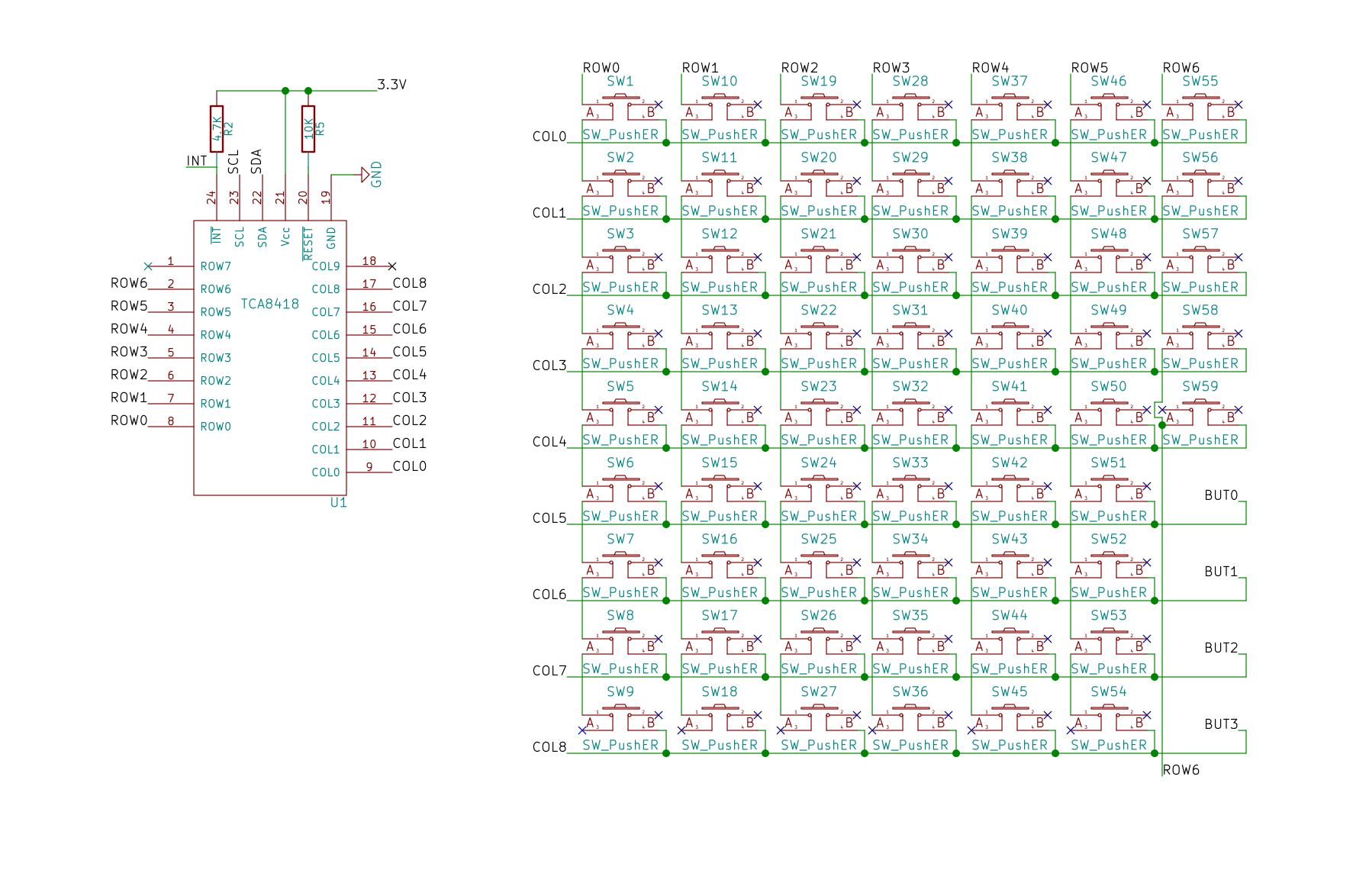The first prototype is assembled and working. The power circuitry is being a little finicky but the keyboard works great. Here's the schematic for it:

To get the keyboard working with the Raspberry Pi A+ (what we're using for our current prototype):
3.3v --> Pin 1
SDA --> Pin 3
SCL --> Pin 5
GND --> Any GND Pin
INT --> ***Is Not Connected
On the software side of things we compiled a custom Kernel with the TCA8418 Driver. By far the easiest method I found for cross compiling the Kernel is found Here. The total compilation time was only about 20mins. The tricky part was getting the device tree overlay working. Take a look at the Raspberry Pi device tree documentation.
Here's the overlay:
/dts-v1/;
/plugin/;
/{
compatible = "brcm,bcm2708";
fragment@0 {
target = <&i2c1>;
__overlay__{
tca8418@34 {
compatible = "ti,tca8418";
reg = <0x34>;
irq-gpio = <&gpio 11 0x2>; /* IRQF_TRIGGER_FALLING */
interrupts = <11 2>; /* high-to-low edge triggered */
interrupt-parent = <&gpio>;
interrupt-controller;
keypad,num-rows = <8>;
keypad,num-columns = <10>;
linux,keymap = <
/* row | column | key-code ex: 04,08,0010 q key*/
0x04080010
0x04070011
0x04060012
0x04050013
0x03040014
0x03030015
0x03020016
0x03010017
0x03000018
0x02000019
0x0507001e
0x0506001f
0x05050020
0x05040021
0x04040022
0x05030023
0x04030024
0x05020025
0x04020026
0x0603002c
0x0602002d
0x0601002e
0x0501002f
0x04010030
0x04000031
0x05000032
0x0201000e
0x0600001c
0x0508000f
0x0308002a
0x00070008
0x00060009
0x0005000a
0x0004004e
0x00030069
0x00020067
0x0001006a
0x0000006c
0x01070005
0x01050007
0x01060006
0x0104000c
0x02070002
0x02060003
0x02050004
0x01030037
0x0306000b
0x03050034
0x02040035
0x06040039
>;
};
};
};
};You can find the keycodes in /linux/include/input.h just convert them to hex.
Here's a couple of sites with additional information:
http://xillybus.com/tutorials/device-tree-zynq-1 Not Raspberry Pi Specific but Has Great Info On The Device Tree
https://aababilov.wordpress.com/2012/10/09/setting-up-the-keyboard-in-linux/ Good Info on How Keyboards Work in Linux
Now that we have the keyboard working the next step is get the PCB re-printed with modified power circuitry once we figure out exactly what went wrong.
That's all for now. We're posting a video of Malti running soon so stay tuned. Also, if you want to get your hands on our prototype check us out at the 2015 Chicago Northside Maker Faire.

 Jayda Van
Jayda Van
Discussions
Become a Hackaday.io Member
Create an account to leave a comment. Already have an account? Log In.